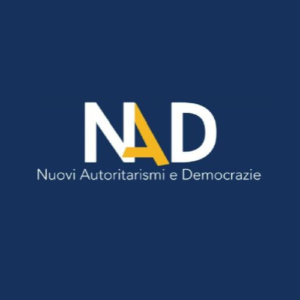Di Bruno Venditto e Ndumba J. Kamwanyah [1]
The Latin maxim Errare humanum est, (sed) perseverare diabolicum is instructive in how we should deal with Covid-19 response. It’s human to make mistakes but repeating them is inexcusable like how the book of God does not condone diabolism. The last Covid-19 measures put in place are diabolic because we keep repeating the same mistakes which landed us into the current 3rd wave.
On the 30th of July during the 32 Covid-19 public briefing, in the light of a slightly improvement on the Covid-19 conditions, three important measures were announced by the President. These are 1- the lifting of regional travel restrictions, 2 – the increase to 50 people in public gatherings, and 3- the resumption of face-to-face lessons for schools. Dèja vu: we have done that before and the result was the 2nd wave.
Concurrently on the same day, the Minister of Health in his subsequent statement to further explain the 32 briefing, acknowledged that “the elevated positivity ratio, now averaging 30 percent, and the high number of reported fatalities are indications that the country is still susceptible to sustained widespread community transmission, which requires and demands strict observance of the preventive public health measures by all of us”. To that end, the question in our mind, as analysts, is whether the new measures introduced last Friday are in line with the minister’s severe warning, particularly if we consider how we have got to this 3rd wave stage?
Undoubtedly, looking at the figures in these last six weeks, from the 19th of June to the 24th of July, there has been an improvement since we have dropped from 11,937 Covid-19 cases to 3,129. This sharp reduction is, however, misleading because, concurrently, the number of tests has almost halved from 27,037 to 12,892. Equally, the number of deaths, if we exclude the week of the 10th of July with 556 deaths, has remained constant well above the 200 weekly deaths.
More relevant here is the fact that the infection rate, which we have calculated as the ratio of number of cases over number of tested, has dropped from 44% to 24.3%. However, our analysis suggests that part of this reduction in the infection rate also has to do with the reality that the tests have been reduced.
In addition, our rate of vaccination rate is still at around 6.2 %, and 1.9 % of the total population (1 and 2 doses). Add those who have recovered to the vaccination rate, it indicates that we are still below the 10% mark, a yardstick needed for us to make a dent in the fight against this deadly pathogeny.
| weeks | covid 19 cases | tested | covid 19 deaths | infection rate |
| 19/06/2021 | 11,937 | 27,037 | 211 | 44.2% |
| 26/06/2021 | 10,349 | 25,376 | 281 | 40.8% |
| 03/07/2021 | 10,052 | 24,418 | 285 | 41.2% |
| 10/07/2021 | 7,318 | 21,000 | 556 | 34.8% |
| 17/07/2021 | 4,376 | 15,219 | 293 | 28.8% |
| 24/07/2021 | 3,129 | 12,892 | 284 | 24.3% |
Source MOHSS daily Covid Reports
It is against this background that we strongly believe that the new Covid-19 measures introduced during the 32 public briefing are premature, especially in the face of a projection that we might be hit by a worse wave in October. If we look at the experience of the countries (such as the UK, France, Italy, or the USA) with an infection rate around 2% and above 50% of their populations fully vaccinated, we see that travel restriction have been lifted only for those with a “Green Pass” that can prove of being fully vaccinated. In their summer holidays it is still not clear if school are going to restart with face-to-face lessons like we are doing here. And already in many countries it is indicated that face to face will start if teachers are fully vaccinated.
In Namibia, with an insignificant vaccination rate and an infection rate above 20%, instead of building on the gains we have made so far, here we are reverting to a quasi-normality situation, repeating the same mistakes we made during the 1st and 2nd waves. It was precisely the high number of cases among the students, funerals, weddings and buzzing which concurrently prompted the escalation of the 3rd wave. In the wake of high Covid 19 mortality rate experienced in this last month, opening schools and increasing public gathering to 50, besides the difficulties inherent in how to control the adherence to this measure, would only mean exponentially increasing the infection and death rate. To err is human but let’s not repeat making the same mistakes. Restrictive Covid-19 measures are a pain to our social and economic livelihood. But it’s better to endure now than in the long run. Let’s do more now, while the situation is still manageable in order to starve out the worst possible Covid-19 scenario that could hit us.
[1] [*] Bruno Venditto is a socio-economist scholar with a PhD in sociology. Ndumba J. Kamwanyah is a multidisciplinary scholar with a PhD in public policy. He is a commentator on political, economic, social and cultural issues. Please, see http://nad.unimi.it/the-third-wave-how-did-we-get-here/#more-5315 of the same authors.

 Tutte le ultime news dal mondo.
Tutte le ultime news dal mondo.